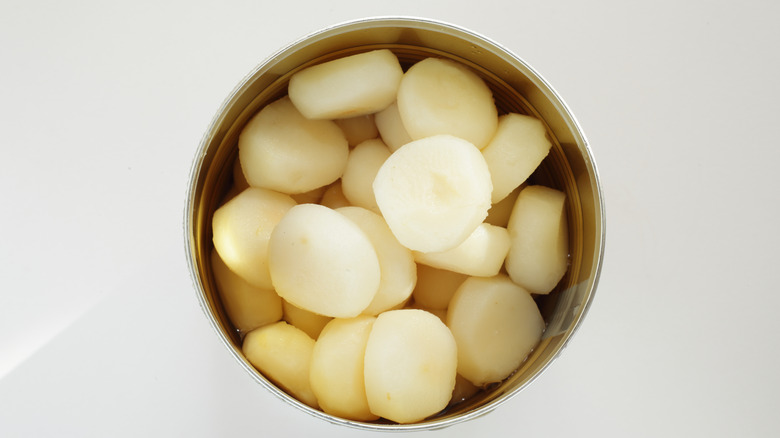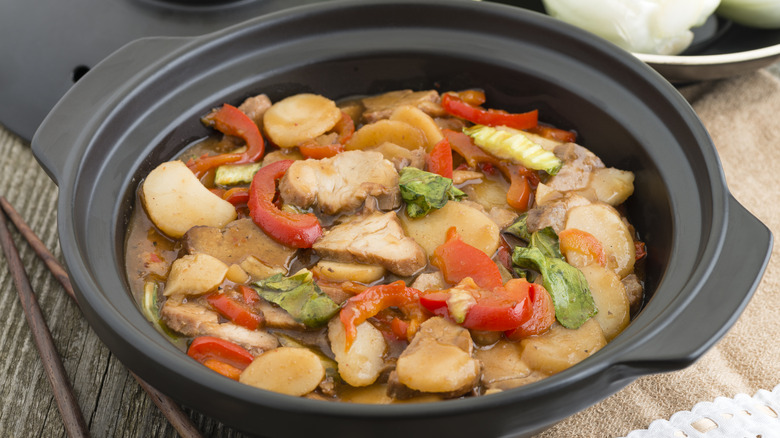The Tip For Cooking With Canned Water Chestnuts & Preserving Crunch
A signature of stir-fries and the star of rumaki (chicken liver and water chestnuts wrapped in bacon), it's all about the crunch when cooking with water chestnuts. Most commonly sold as white disks in cans in the United States, water chestnuts are mild in flavor but with a high level of crispiness. Since they are loved for their crunch, it's important to maintain that texture when cooking with the tuber.
Whether giving a new twist to green bean casserole or adding them to chop suey, water chestnuts have a unique ability to stay crunchy if they are exposed to heat thanks to the ferulic acid content they contain. However, over time and if cooked for too long, the heat and moisture can affect their texture, and they can lose their signature crispy bite. One way to guarantee that water chestnuts will preserve their maximum level of crunch is by adding them near the end of the cooking process — not the beginning.
Add water chestnuts toward the end of the cooking process to retain its crunchy texture
There are a variety of options for cooking with water chestnuts, from broiling to roasting and even microwaving them. To avoid that unwanted soft water chestnut, it all comes down to when you add them to the pot or skillet. While it's tempting to throw them in with the rest of the ingredients, you should wait to incorporate them near the end of the cooking process so they are exposed to a minimal amount of heat and liquid that could cause them to become soft and soggy.
Generally, the water chestnuts are added about halfway through to the last step for making such foods as broccoli beef lo mein, but the best guidance is to keep an eye on them to make sure they are not being overcooked. For fresh water chestnuts, they can be cooked up to five minutes, while canned ones are best when cooked for up to two minutes. So, the next time you crave a highly crunchy element in your vegetable stir-fry or hot and sour soup, add some canned or fresh water chestnuts — but make sure to wait near the end so your textural craving is satisfied.

